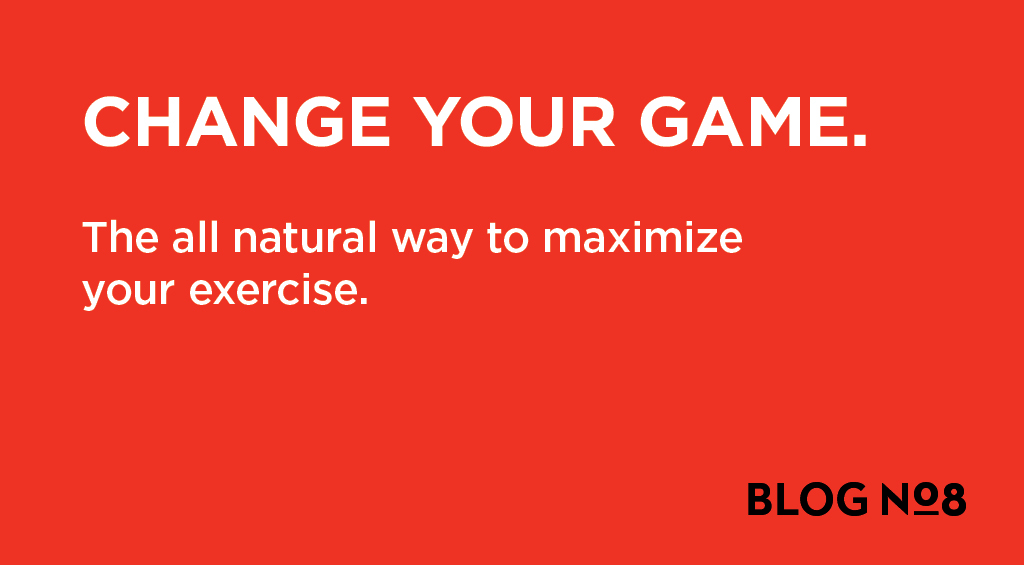
Achieve Peak performance.
In the world of sport, there’s always pressure to perform.
That’s why athletes go to such great lengths to push their bodies to the max.
As we have all seen, this can lead to the use of performance enhancing drugs.
Of course, most of us aren’t professional athletes. But there are many natural ways to keep our bodies fit without resorting to such drastic measures.
What you eat is key, of course. I’m not a fan of fad diets, but common sense approaches like cutting out junk food and eating a predominantly vegetarian diet are super important. Just look at Canada’s Brendan Brazier or Georges Laraque, both vegan athletes. That said, you can eat a healthy omnivorous diet too. My primary focus is on loads of greens for all of the vitamins, antioxidants and minerals, followed by all of the other colourful fruits and veggies to round out these ingredients.

I like to focus on complex carbohydrates, aka low glycemic index carbs (whole grains, legumes, fruits and veg) to allow the body to take its time to efficiently store sugars as glycogen – a somewhat inefficient storage molecule in our muscles and liver for carbs that we burn during exercise. Eating lower glycemic index carbs helps our bodies store glycogen more efficiently, making it easier to unpack during exercise. Limit high glycemic index carbs (juice, processed cereals, anything made with flour, rice crackers, sugary sweets or drinks) unless it’s right before a workout, as you can burn this stuff quite quickly.
That said, you generally don’t want any food in your belly for at least 45 minutes to an hour before your workouts. Remember mom saying “no swimming after eating” ? Well, the same goes for all workouts. You need to let the food get a couple of valves down past your stomach or you will likely have heartburn, cramps and indigestion.
I like to focus on eating some protein within an hour or so after workouts to try to repair some of the damage training has done to my muscles. These little micro-tears and strains help make us stronger in the long run, provided we take time to recover and nourish ourselves. For vegetarians, you need a combination of a grain and a bean (legume) to get all of the amino acids you need to make a complete protein. For omnivores, any meat, egg, fish or dairy has all of the amino acids you need. Stick to lean proteins, as saturated fat levels can be very high in some of these foods. Saturated fats can really clog your liver and cardiovascular system and tend to make us feel tired too. It makes me crazy how often sporting facilities from hockey arenas to ski slopes serve mostly processed, high saturated fat food foods like poutine and cheeseburgers that leave us feeling tired and lethargic. This isn’t what we should be feeding our athletes!

Besides eating well, here are some other tips and tricks I recommend.
-
Train with a friend or friends. Having a friend hold you accountable and on track really helps you stick to your goals. I am much more likely to stick to my regular trail runs, lap swims, and yoga classes if I have friends to go with me. If it is just up to me to train alone then my personal discipline isn’t always the best. Get outside, get social and train with a friend / co-worker or family member that has similar goals to you!
-
Set a schedule. We tend to stick to our fitness goals the more we schedule our workouts / training sessions. If I know I have signed up for something, I am way more likely to follow through with it. We also tend to work a bit harder when in a group compared to on our own.
-
Remind yourself that the busier and more stressful life gets, the more you need exercise! My approach to stress is acknowledging that “Fight or Flight” are action verbs! Historically, stress evolved to help us perform better athletically. So if life is throwing you stressful curveballs – exams, stressful boss or co-worker, family member in the hospital – don’t put your training and fitness on hold. Go blow off some steam!
-
Set a goal. This can be as simple as wanting your body to be in better shape for a wedding, vacation or bathing suit season. Looking at patients who have been successful with their exercise goals over the years, I find the ones who have an event to get ready for tend to stick to their training regimes better. After I had completed running a tri-a-tri and a 5k, I signed up for a 10k, then a 14 km trail run, and then a Sprint Triathlon in Bracebridge. I never worked harder on my fitness goals! I don’t care about winning, but I want to be able to cross the finish line feeling strong, healthy and injury free.
-
Focus on a principle of “strength in diversity”. I first came across this idea while studying subjects like genetics, permaculture & ecology. The more variety a system has the stronger and more resilient it seems to be. I apply this principle to both my exercise and nutrition. Mix it up to cover your bases! Someone who swims, paddles, rows, bikes, runs, hikes and goes skiing is way more likely to be fit, healthy and happy than someone who only goes for a walk when the weather is good.

-
Hydrate, hydrate, hydrate. If I haven’t had enough to drink on a day that I am going for a longer run, swim, bike or even a frisbee golf game, I don’t have the stamina I need to finish well. Muscles can get tired or even shaky – which doesn’t help my frisbee putting accuracy. And I don’t want just water. I want a little bit of quick access liquid sugars to get my blood sugar up easily for a quick burn, plus some electrolytes to help my muscles twitch properly. Lemons, limes, greens, herbal teas and sugar from sources like juice, honey or maple syrup are my main go-tos. Avoid sports drinks! My sports drink of choice is to buy a very high quality pure fruit, or fruit and vegetable juice with no sugar added, put about 1/5th of that in my water bottle, and top the rest up with water
-
Focus on better breathing during exercise. Go in through the nose to help warm and moisten the air before it hits your lungs. Breathing well and breathing deeply can do amazing things to help optimize athletic performance. Your body ideally likes to burn fuel in the presence of oxygen. When you burn fuel without enough oxygen, you get lactic acid building up which leads to cramps. The better you breathe and clear CO2 efficiently the more you can stave off these cramps. This is also why we put both ginkgo and cordyceps into our athlete’s formula – to help your body and blood utilize oxygen more efficiently, thereby improving stamina.
-
Stay on track. Life can through us curveballs that stop us from exercising the way we had been. I have seen these off days turn into weeks and months in many people. The next thing you know they are stressed out, not sleeping well, irritable, and unhappy with their bodies. Successful patients tend to get back to regular exercise within a few days to a week of losing their momentum. Do your best to get back on track fast!
-
Sleep well. Having good sleep allows your body to repair and recover from training. It’s simple, but I can’t stress enough how important this is.
- Have fun. If something is pleasurable, social, and playful, you are far more likely to stick with it. Pleasurable exercise is way more likely to be sustainable – and we need to sustain exercise to see the real benefits. Expect the first few times out to really kick your butt and be a bit discouraging. By three to six weeks you should notice it being much easier and your body changing in good ways. Start slow, and build slowly. And have a good time doing it!
Harrington’s No. 1 was created to supplement all of these natural approaches. It contains only 4 ingredients, each one delivering a powerful dose that gets real results. For more information on Harrington’s No. 1, check out the product page here.
So there you go. You don’t have to be a professional athlete to achieve new plateaus of power with these techniques, along with Harrington’s No. 1. And if you ARE a professional athlete, just imagine where No. 1 will take you…


